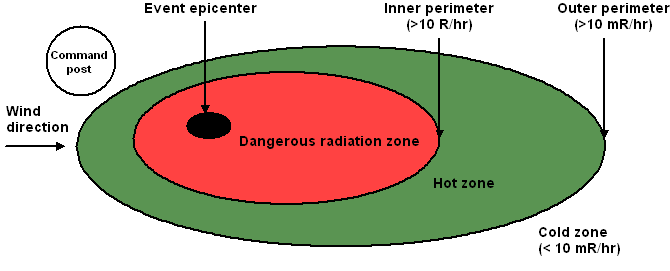National Council on Radiation Protection and Measurements (NCRP)
Radiation Protection Perimeter Guidelines

 |

*Adapted from Key Elements of Preparing Emergency Responders for Nuclear and Radiological Terrorism (NCRP Commentary No. 19), National Council on Radiation Protection and Measurements, Bethesda, MD, December 2005. Purchase required; see Responding to Radiological and Nuclear Terrorism: A Guide for Decision Makers, (PDF - 1.61 MB) (NCRP Report No. 165), Bethesda, MD, 2010. This diagram was created based on recommendations made in the documents noted above, but the diagram is not a part of the document. The location of the perimeter lines depends on the facts of each incident, and the locations will change over time, as the incident evolves. NCRP recommends that "where practical, the Hot Zone boundary should be established to match physical boundaries (e.g., streets and fences) that are close to the radiation levels identified above." NCRP 165 recommends that "when the cumulative absorbed dose to an emergency responder reaches 50 rad (0.5 Gy), a decision be made on whether or not to withdraw the emergency responder from the Hot Zone. The NCRP considers the 50 rad (0.5 Gy) cumulative absorbed dose a Decision Dose, not a Dose Limit." REMM notes that various agencies and societies have provided different guidance recommendations. |

